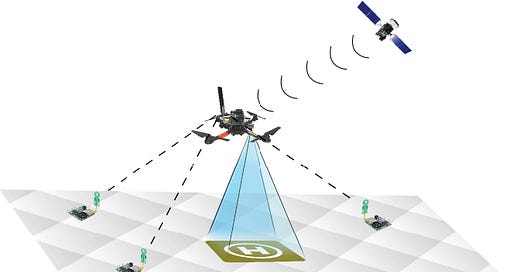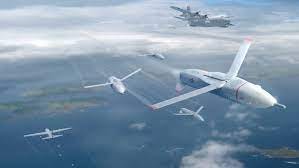“We don’t want war. But if you want war with the United States of America, there’s one thing I can promise you, so help me God: someone else will raise your sons and daughters. We fight so our children never have to. We fight for one day when our children and our enemy’s children can discuss their differences without fear or loathing” — Former Army Staff Sgt. David Bellavia, Medal of Honor recipient
The Pentagon's Replicator Initiative aims to deploy thousands of autonomous systems (drones) for use in military operations over the course of a few years, with the first expected to be fielded at some approximate date between February and August 2025. How many? Leaders of the Defensive Innovation Unit didn’t say. Estimates range in the thousands.
Led by Deputy Secretary of Defense Kathleen Hicks, this initiative will develop drones that can be produced quickly, at a low cost, with the ability to perform complex tasks. These drones are intended to be "attritable," Hicks said, meaning that they can be lost or destroyed without significantly impacting the overall mission.
The goal: create a swarm of cost-effective drones that can be used for various military missions, such as surveillance, reconnaissance, and even potentially lethal operations.
What kind of tech are these drones packing?
Sensor fusion: AI can be used to integrate data from multiple sensors, like cameras, radar, and lidar, to create a more complete picture of the environment and help the drones navigate. avoid obstacles and achieve objectives. Lidar ("light detection and ranging") technology uses lasers to measure distances and create 3D maps of the surrounding environment.
Path planning: AI algorithms can be used to plan the drone's route, considering factors like terrain, weather conditions, and potential threats.
Real-time decision-making: AI enables drones to quickly respond to unexpected situations, such as avoiding a sudden obstacle or adapting to changing conditions.
Anduril is focused on creating autonomous ground vehicles and sensor systems, while Shield AI is focused on creating AI-powered software to help autonomous drones make real-time decisions.
The Replicator Initiative aims to integrate these different technologies into a cohesive system that can be rapidly deployed in the field.
Speak Softly and Carry a Big Stick
China is investing heavily in developing military drones to become a leading exporter of these systems. They’re focused on developing both small, tactical drones and larger, more sophisticated systems.
Some of the capabilities that China is working on include:
Precision strike capabilities using missiles or other weapons.
Electronic warfare and cyber-attack capabilities.
Intelligence, surveillance, and reconnaissance (ISR) capabilities.
Swarm tactics, where many drones work together to overwhelm an enemy's defenses.
While Xi Jinping stated publicly that he has no “interest in expanding China’s sphere of influence,” China, Russia, Iran, India, and Pakistan have all failed to sign a U.S.-initiated pledge to use military AI responsibly.
The rapid development of China's drone capabilities worries other countries, given Bejing’s increasing ability to initiate aggressive, destabilizing actions.
Alexandr Wang—founder of Scale AI—said on the
show: “The Chinese military has been spending between roughly 1-2% of their budget on AI technologies. And then in that same time period, the U. S. DoD has been spending 0.1-0.2% of its budget on AI technologies.”That means the Chinese government is spending between $1.532 billion and $3.064 billion more on AI military technology than the US.
The only caveat to this is that China has only been allowed reduced capacity A100s from NVIDIA vs the H100s (and soon H200s) American companies use. Still, Alexandr’s point is well taken, that we should invest in the future vs legacy technology (aircraft carriers, etc).
So while it would be nice to think we can take the Sundar Pichai view, that China and the US can reach unprecedented levels of technological advancement together, I would be much more in the Vinod Khosla camp: that TikTok should be banned, OS should be constrained to block off China, and others, so the US can get at least a 6-12 month head start. And China should only allowed reduced capacity A100 GPUs to train AI.
I do think the de-escalation of tensions between China and the US is a welcome development, and a long time coming. And hey, we got some pandas out of the deal.
But regarding matters of defense, I’m squarely in the Teddy Roosevelt camp: “Speak softly and carry a big stick.”






